 Facebook
Facebook
 X
X
 Instagram
Instagram
 TikTok
TikTok
 Youtube
Youtube
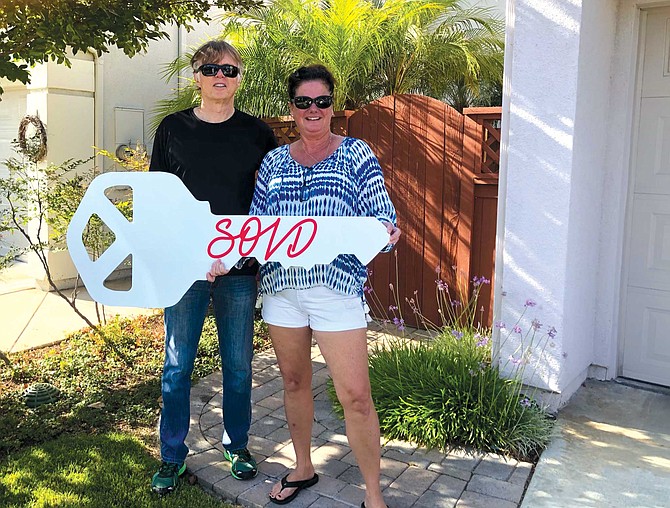
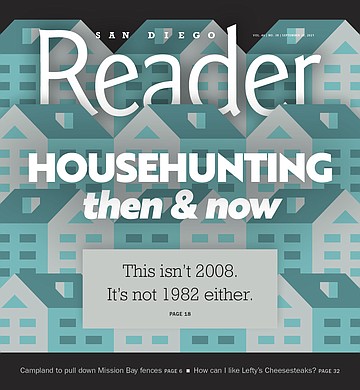
We’ve all heard about how home prices in San Diego have never been higher, and that demand is so great that homes for sale typically get multiple bids and wind up selling for more than the list price — in some cases, significantly more. What we haven’t heard much about is what’s triggering this boom.
Local realtors say one of the most significant factors is the arrival of home buyers from the San Francisco Bay Area and Silicon Valley, where the tech explosion years ago sent home prices skyrocketing. Covid-19 forced many businesses to send their workers home, while the Delta variant squashed what many had expected would be a mass return to the office. As a result, many tech firms — including Google, Twitter, and Facebook, all headquartered up north — now offer telecommuting as a regular option. Over the last few months, “we have had a huge influx of Bay Area people moving down for the ‘lower’ prices,” says Devonee Alfrey, a realtor who focuses on North County. With Covid-19 and remote working, she says, “being present in Silicon Valley is no longer necessary to do the job.”
The median sales price of a single-family home in San Diego County was $860,000 in July, according to the California Association of Realtors — compared to $1.3 million in the San Francisco Bay Area. The median sales price in the city of San Francisco was nearly $1.9 million and, in San Mateo, $2.1 million. Meanwhile, Zillow Research in mid-August reported that as of July, list prices of homes for sale in San Francisco over the last year have dropped 4.9 percent year over year, while the number of homes for sale has nearly doubled.
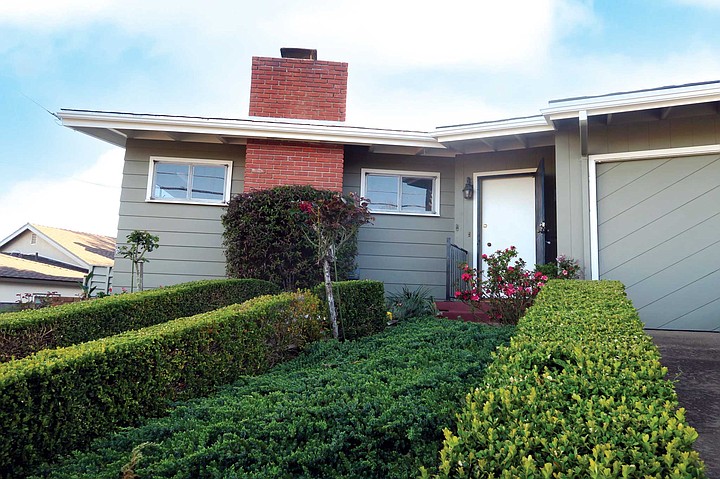
“The first two weekends of open houses in June, after we were allowed to have open houses again, I hosted two back-to-back weekends in Carlsbad,” said Alfrey, who ventured into real estate several years ago and sells six to eight homes a year. “I had at least 20 visitors each weekend, with 75 percent to 80 percent of them people who were relocating from the Bay Area. One couple shared that they are not returning to onsite offices and have the flexibility to work from home permanently. The cost of living and quality of life is so much better here in North San Diego. We can get a lot more for our money, too. In the Bay Area, traffic, the cost of living and the homeless situation has become an issue.”
Michael Wolf, who with his wife Jessica launched their own San Diego real estate firm in 2006, says, “The market is crazy. It’s the only way to say it.” And a big part of the reason, he said, “is this demand that’s coming from the Bay Area. It’s reverse sticker shock. What would sell up there would cost about two-thirds as much down here.”
Mike Fraijo is a veteran North County realtor whose wife runs the Carlsbad Danish Bakery in Carlsbad. He pops in every now and then for a cup of coffee and to lend a hand, and one morning struck up a conversation with a visiting pilot from Vallejo. “He said his son works for an IT company in San Francisco, and because he doesn’t have to go to the office anymore and he’s tired of the homeless along Van Ness, he and his wife just moved to Encinitas,” Fraijo says. “He’s working remotely — and he’s not alone. I think a lot of people are doing the same thing. People are even moving to Texas from the Bay Area.”
Phong Le is a 41-year-old product manager from San Jose who has been working in software for four years. He’s also a reserve Commander in the U.S. Navy. His wife Tram works for a leading tech company. Last April, given the chance to work remotely, the pair sold their home in San Jose and bought a bigger house in Carlsbad. “We’re both originally from Southern California, and we have a lot of family in Orange County,” Le says. “With the lockdown, it was a tough year and a half, since we don’t have any family up north. So with the ability to work remotely, it just made us reprioritize — and while we originally were going to move to Orange County, we spent a week down here and fell in love with the area. Plus, you get much better values down here. We were able to upgrade.”
Real estate’s been good to me.
I’ve always wanted to own my own home. When I was a little fellow, my German mother instilled in me the virtues of home ownership with an old German saying, “Schaffe Schaffe Häusle Baue,” which translates to “Work, work to build a house.”
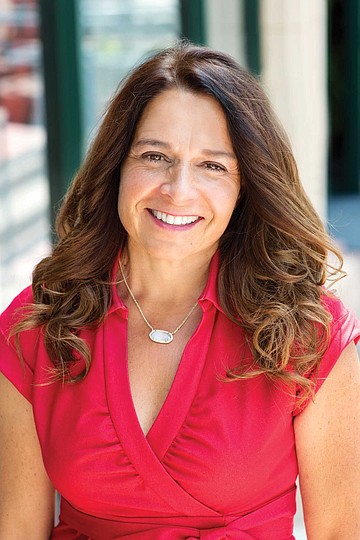
I bought my first home, a townhouse on the north end of Point Loma, in a rather crummy, under-the-flight path area known as Loma Alta, for $86,000 in 1982. I was twenty-four. It was one of six units in three buildings overlooking busy Nimitz Boulevard. I had been living in a musty old one-bedroom apartment just off Chatsworth and Voltaire that I shared with a giant cockroach, and I was looking for something newer, cleaner and bigger, with two bedrooms, so I could have an office for my burgeoning career as a freelance writer. The guy who built the development, on the site of his old family home, needed a certain percentage of owners to maintain his bank loan. He cut me what I thought was a good deal, with hardly any down payment. Still, I needed a partner to qualify, so an attorney friend who needed a write-off joined in. I would pay fair market rent and we’d split the balance on the loan, which had been taken out at some ungodly rate, something like sixteen percent.
According to the San Diego Housing Report, it takes 28 days, on average, to sell a home in San Diego County these days. For homes priced below $750,000, the expected market time is just 21 days. “Anything below 45 days indicates an insane, scorching hot housing market where buyers are tripping over themselves to be the first to see a home that just hit the market, multiple offers is the norm, and homes are selling above their list prices,” the report says.
“An example of [home price] increase in my own experience would be one of my most recent listings,” says Devonee Alfrey. “My clients lived in the home for two and one-half years and sold this July due to a job transfer. They made a 50 percent profit on the sale of their home! It is happening in condos, too. I have a condo listing in Oceanside and received seven offers, all above asking, within three days. The under-$500,000 homes are flying, and buyers are super competitive.”
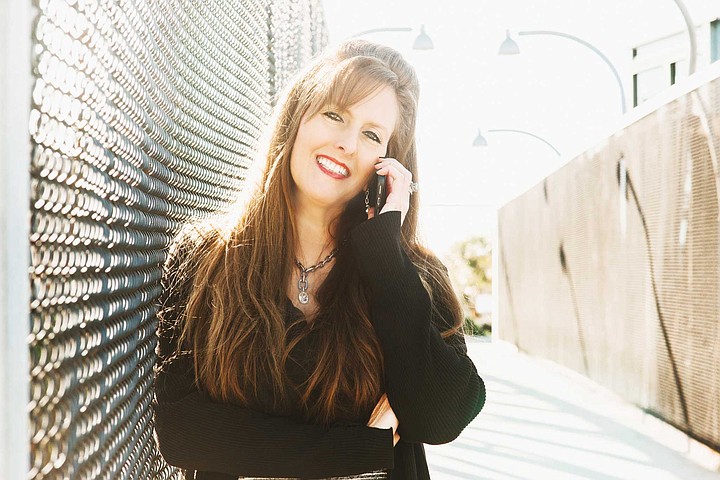
Bay Area refugees aren’t the only ones fueling the local housing market. “I’m probably the busiest I’ve been in real estate in eight years,” says Fraijo, who also works in property management. “I just closed one in San Diego last week, and one yesterday, and I’ll close two next week. There are people from the Bay Area and the Los Angeles area, but not all of them. I just sold a condo to a Hispanic family from right here — it’s three people, signing together. Another local family is buying a duplex, and then I’ve got a lady from Las Vegas who’s tired of the heat.”
Realtor Craig Turner, a native of Australia who has been selling real estate since 1988, says, “It’s really all supply and demand, with some added stupid money. Stupid money is money that really wasn’t earned, as in the case of Gen Xers and millennials who have been able to cash in stocks given to them from companies they work for, or did work for. Think Apple, Tesla and whatever startups. The stupid money accounts for a lot of sale prices being hundreds of thousands of dollars over the list price. Inventory levels are still low and it is super competitive to get a listing and even moreso to get an offer from a buyer accepted. Most sellers are savvy to the market and not interested in selling unless they are assured they can buy something else. Many Boomers see this as an opportunity to cash out and move to their retirement destination.”
Wolf says that while things have slowed down a little since the summer began, there is still a pronounced shortage of available homes for sale. As a result, he’s pretty confident the market is not in a “bubble,” with prices likely to suddenly drop, as they did during the Great Recession of 2007-2008. “There’s no real ability to increase supply, because we’re an entirely developed county,” he says. “The only place to expand is in the Valley Center/Escondido area and outside Chula Vista, but those are only bookends. And even if they were to build those areas out, it would still only be a drop in the bucket of what we need. We’re going to have perpetual supply issues.”
This does not mean realtors are making money, hand over fist. The shortage of homes for sale makes it hard to acquire listings. Until recently, Covid restrictions made it difficult to hold open houses. And the nationwide eviction moratorium further impeded home sales because potential home sellers had to figure out whether they could get their tenants to move. “We were required to have COVID waiver releases for every showing for over a year,” Alfrey says. “Signed waivers from buyers, masks, booties — just to get into the door.” Adds Fraijo, “I just lost a deal because my client wanted to sell his house and his tenants wouldn’t move. The buyer in this case got cold feet, so he just walked away and the deal fell apart.”
Kelly McLaughlin, who has been a realtor since 2005, says “the most shocking number as a realtor is when we look for homes for sale. There is historically low inventory. [The number of] homes for sale has declined 47.3 percent since last year, meaning there is very limited inventory — nearly half as many homes on the market as last year, which will drive the prices up. I am finding sellers are continually asking higher prices for their homes and buyers are competing with multiple offers in every price category. In order to be competitive, buyers are shortening all their contingency periods, waving the appraisal contingency, and even offering free rent back for several months for the seller. In this market, some buyers are getting a home inspection but not asking the seller to fix anything. This is happening in most parts of the country. Buyer fatigue is real! It is happening and it is brutally competitive out there.”
I eventually bought my partner out and lived in the townhome — I still remember the address, 2253 Famosa Boulevard, Unit A — until 1994. I had gotten married three years earlier and my wife hated the place. The apartment complex next door had as tenants several meth heads, including one who lived in an upstairs unit approximately six feet from my office window. My dad by then had retired from Teledyne Ryan Aeronautical and had gotten into real estate. I was working in Santa Ana, and while I wanted to live closer to work, I didn’t want to leave the county of my birth. We looked at several houses in Carlsbad and finally, in May 1994, moved into a four-bedroom tract home east of El Camino Real on York Road. It wasn’t in great shape, and the interior – blue walls, orange shag carpeting, and an elevated tile island, in orange and brown, between the living and dining rooms – appeared unchanged from when the house was built in 1978. Still, the price was right — $237,000 — and the interest rate, just over seven percent, was a bargain compared to what I had been paying for the townhome. I borrowed $10,000 from my parents to help with the down payment, which I paid back six months later when I finally sold my condo for a breathtaking $101,000, a $15,000 profit after twelve years of ownership.
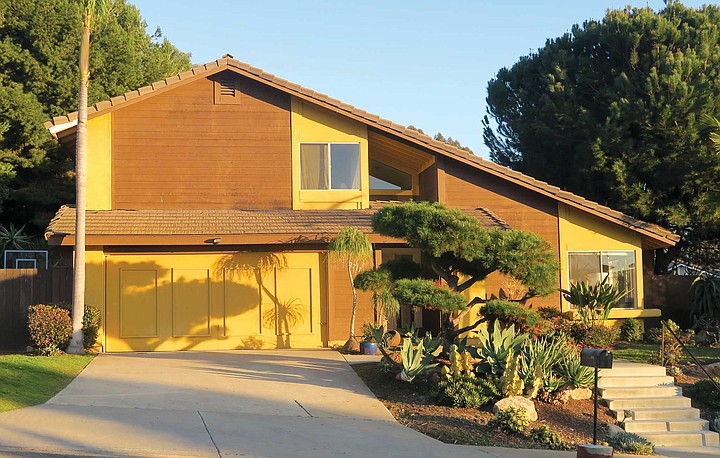
When mortgage rates began to drop in 2002, I refinanced the York Road house, taking out a fifteen-year loan at just over six percent. After eight years and the construction of a fifth bedroom, the home’s appraised value had risen to $250,000, a whopping gain of less than six percent.
Over the next few years, I watched home prices soar, and several of my neighbors sold their homes and bought new, more expensive ones, using their equity to bring down their out-of-pocket costs. But I didn’t want my property taxes to double, so I stayed in my home on York Road, diligently paying down my mortgage while making improvements.
By 2007, we had begun saving for a kitchen remodel. Then my mom died in December, followed by my dad passing in May 2008. They left me, their only child, a modest house in Point Loma that I fixed up and rented to a neighbor’s parents, and $50,000 cash. I pooled the cash they left me with roughly the same amount I had saved and promptly bought the house next door, also a four-bedroom tract home but with a huge third-of-an-acre backyard, for $505,000. I had joked for years with the retired couple who had lived there that when it came time for them to move into a retirement home, they should sell me their house. That moment came at an opportune time, when I had plenty of cash and prices were coming back down. I was initially scheduled to close in September, but the day I was supposed to sign the final papers my lender, Washington Mutual, shut its doors for good. The process began all over again and I finally closed in January 2009. I spent about $30,000 fixing it up and then rented it out at $2,200. My mortgage, with interest and taxes, was $3,065, but I justified the monthly loss by convincing myself I was building equity – which I was.
Skyrocketing prices. Bidding wars. The residential real estate market in San Diego sounds a lot like the market runup from 2002 to 2006, only in a much more compact time frame. A friend owns a home in Carlsbad that was appraised at $860,000 when he refinanced it last November. Today, the same house is valued at more than $1.1 million, according to Zillow.
We all know what happened during the runup in the early naughts. During the recession that followed, home values dropped 20 percent to 30 percent. Realtors see little chance of a crash such as this happening again. “Analysts are predicting a flattening of the prices in 2022-2023, but not a crash of pricing,” said Malena Bennett, a realtor since 2013. This, despite the fact that “home prices have seen increases well beyond any predictions,” she says. “A key difference now is that demand remains high, interest rates are low, and supply continues to be below the need,” Bennett says. “Excess supply was a significant factor in the housing bubble in the Great Recession. Construction was stunted due to Covid and we are seeing building starting up again, but land is always scarce in Southern California.” Like Wolf, Bennett maintains, “we are seeing a very slight correction in our local market, with prices being reduced on listings, something that we’ve not seen much during this period of rapidly escalating asking prices. However, the continued demand for housing, record low inventory, and low interest rates suggests a strong residential real estate market for the next couple of years or so.”
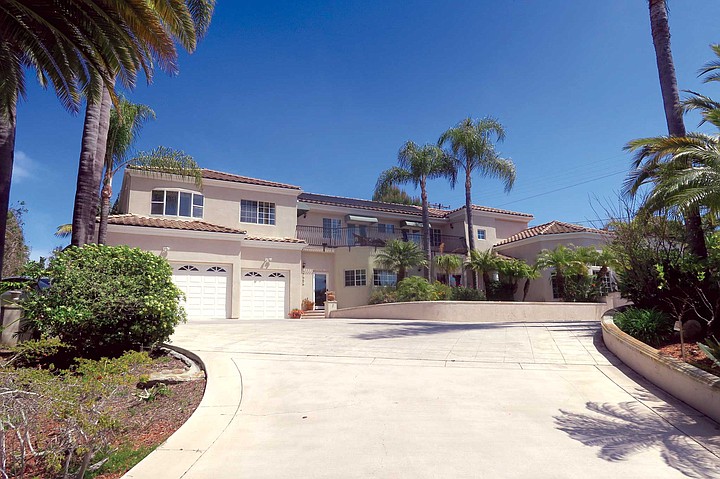
There’s also a better class of buyers than in the early 2000s, when loan requirements were so lax that practically anyone could buy a home regardless of credit score, and with little or even no money down. According to a July 2021 report from the California Association of Realtors, the median down payment is 10 percent, compared to just 2.4 percent in 2006. The percentage of buyers who put nothing down is 10.6 percent, compared to 40.9 percent in 2006. And the percentage of buyers who are taking out adjustable-rate rather than fixed mortgage loans is just 2.3 percent, compared to 38.1 percent in 2006. “I don’t see that we will have a crash,” says Alfrey. “I’m seeing a leveling out where homes are selling close to listing instead of the bidding wars, but this is largely a function of more homes coming on the market, particularly owners of rental homes who want to strike while the market is hot.”
Among those looking to cash out is Frank Silva, a 59-year-old sales executive who has lived in North County since 1987. He and several partners bought two homes in Carlsbad in 2012 as investment properties, one for $515,000 and the other for $520,000. “That’s when the market tanked, so having lived through the ups and downs, right, we just felt it was an opportune time,” Silva says. He and his partners were able to rent the homes for more than the monthly mortgage payment, he says, “so it really penciled out – and it was a good time to diversify out of the stock market.” Silva and his partners sold their first rental house in 2018 for $765,000, and earlier this year sold the second one for $1.38 million. “We’re doing a 1031 exchange and are now in escrow on a house in San Elijo Hills,” Silva says. (A 1031 exchange derives its name from Section 1031 of the U.S. Internal Revenue Code, which lets people avoid paying capital gains taxes when they sell an investment property and reinvest the proceeds from the sale within certain time limits in a similar property or properties of equal or greater value.) “I wouldn’t call it a good deal or a bargain, but, look, interest rates are low, we did a 1031 exchange so there are no tax implications, the property pencils out from a cash-flow perspective, and if you take a look at San Elijo Hills, it’s a wonderful walkable community just up the hill from Cal State San Marcos. That area is going to blow up as they redefine and grow that school. It’s a great investment. It’s a long-term play. The intention is to hold.”
In 2011, we were once again looking at remodeling the kitchen of our York Road home. The housing market had begun to recover from the recession, but then in the spring of 2011, prices fell even lower than they had been during the crash. One day my wife told me her dream home, which a good friend had purchased for $921,500 back in 2002, before the run-up, was back on the market, at $1.28 million. Fat chance, I told her.
The house sat.
The price dropped to $1.15 million.
The house sat.
The price was lowered again, this time to $995,000.
We jumped, and over the span of ten days sold our house on York Road and purchased the new one, on Monroe Street, offering an extra $6,000 at the last minute because another offer had just come in. After hastily painting the kitchen cabinets and sprucing up the place as best we could, we sold the York Road house for $545,000. After paying off the balance of my home loan and realtor commissions, I was left with roughly $400,000 to put into Monroe, enough barely to qualify for the $600,000 loan. Fortunately the Point Loma house my parents had left me was paid off and the monthly rent payments helped with my new mortgage.
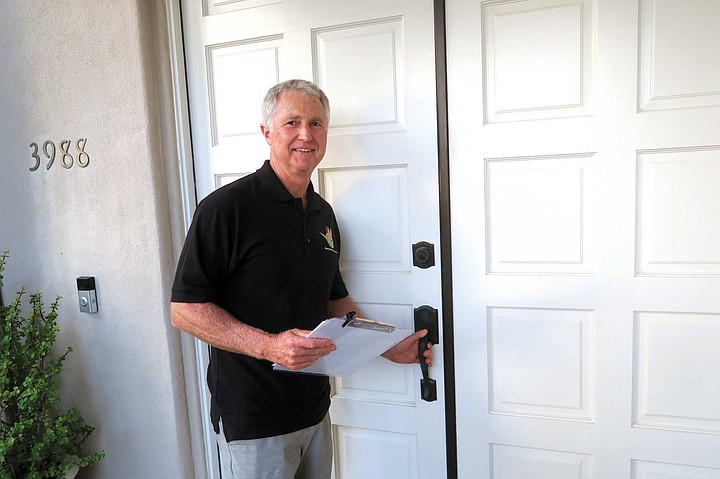
October will mark our tenth anniversary in the home, which Zillow now values at $2.25 million. The house on Athens, meanwhile, has appreciated to $1.15 million, and in the twelve years I’ve owned it, the monthly rent has risen from $2,200 to $3,950. I plan on keeping this home and dream of one day having my son, daughter-in-law and granddaughter live there.
Even in his crazy market, are there still bargains to be found? “Hah, what’s a bargain?” asks Craig Turner. “It’s what the buyer perceives to be a good deal. A property that doesn’t get listed in the MLS (multiple listing service), priced in line with the last sale, and won’t be bid up. Problem properties fit the bill these days. For instance, a rental property where the tenant isn’t paying rent and hasn’t been evicted because of the Covid moratorium. Landlords are willing to sell below market to a buyer who will take on the tenant – and the problem.”
“I don’t believe there are any bargains right now,” counters Kelly McLaughlin. “The best way to help our buyer is to network with other agents and maybe get a property before it gets to the ‘coming soon’ or ‘active’ status, but I wouldn’t call it a bargain. I would call it a pocket listing. Also, because of the multiple offers, if an agent knows you or you have a good reputation your offer will go to the top of the list — but that doesn’t mean you’ll necessarily get the property.”



We’ve all heard about how home prices in San Diego have never been higher, and that demand is so great that homes for sale typically get multiple bids and wind up selling for more than the list price — in some cases, significantly more. What we haven’t heard much about is what’s triggering this boom.
Local realtors say one of the most significant factors is the arrival of home buyers from the San Francisco Bay Area and Silicon Valley, where the tech explosion years ago sent home prices skyrocketing. Covid-19 forced many businesses to send their workers home, while the Delta variant squashed what many had expected would be a mass return to the office. As a result, many tech firms — including Google, Twitter, and Facebook, all headquartered up north — now offer telecommuting as a regular option. Over the last few months, “we have had a huge influx of Bay Area people moving down for the ‘lower’ prices,” says Devonee Alfrey, a realtor who focuses on North County. With Covid-19 and remote working, she says, “being present in Silicon Valley is no longer necessary to do the job.”
The median sales price of a single-family home in San Diego County was $860,000 in July, according to the California Association of Realtors — compared to $1.3 million in the San Francisco Bay Area. The median sales price in the city of San Francisco was nearly $1.9 million and, in San Mateo, $2.1 million. Meanwhile, Zillow Research in mid-August reported that as of July, list prices of homes for sale in San Francisco over the last year have dropped 4.9 percent year over year, while the number of homes for sale has nearly doubled.

“The first two weekends of open houses in June, after we were allowed to have open houses again, I hosted two back-to-back weekends in Carlsbad,” said Alfrey, who ventured into real estate several years ago and sells six to eight homes a year. “I had at least 20 visitors each weekend, with 75 percent to 80 percent of them people who were relocating from the Bay Area. One couple shared that they are not returning to onsite offices and have the flexibility to work from home permanently. The cost of living and quality of life is so much better here in North San Diego. We can get a lot more for our money, too. In the Bay Area, traffic, the cost of living and the homeless situation has become an issue.”
Michael Wolf, who with his wife Jessica launched their own San Diego real estate firm in 2006, says, “The market is crazy. It’s the only way to say it.” And a big part of the reason, he said, “is this demand that’s coming from the Bay Area. It’s reverse sticker shock. What would sell up there would cost about two-thirds as much down here.”
Mike Fraijo is a veteran North County realtor whose wife runs the Carlsbad Danish Bakery in Carlsbad. He pops in every now and then for a cup of coffee and to lend a hand, and one morning struck up a conversation with a visiting pilot from Vallejo. “He said his son works for an IT company in San Francisco, and because he doesn’t have to go to the office anymore and he’s tired of the homeless along Van Ness, he and his wife just moved to Encinitas,” Fraijo says. “He’s working remotely — and he’s not alone. I think a lot of people are doing the same thing. People are even moving to Texas from the Bay Area.”
Phong Le is a 41-year-old product manager from San Jose who has been working in software for four years. He’s also a reserve Commander in the U.S. Navy. His wife Tram works for a leading tech company. Last April, given the chance to work remotely, the pair sold their home in San Jose and bought a bigger house in Carlsbad. “We’re both originally from Southern California, and we have a lot of family in Orange County,” Le says. “With the lockdown, it was a tough year and a half, since we don’t have any family up north. So with the ability to work remotely, it just made us reprioritize — and while we originally were going to move to Orange County, we spent a week down here and fell in love with the area. Plus, you get much better values down here. We were able to upgrade.”
Real estate’s been good to me.
I’ve always wanted to own my own home. When I was a little fellow, my German mother instilled in me the virtues of home ownership with an old German saying, “Schaffe Schaffe Häusle Baue,” which translates to “Work, work to build a house.”

I bought my first home, a townhouse on the north end of Point Loma, in a rather crummy, under-the-flight path area known as Loma Alta, for $86,000 in 1982. I was twenty-four. It was one of six units in three buildings overlooking busy Nimitz Boulevard. I had been living in a musty old one-bedroom apartment just off Chatsworth and Voltaire that I shared with a giant cockroach, and I was looking for something newer, cleaner and bigger, with two bedrooms, so I could have an office for my burgeoning career as a freelance writer. The guy who built the development, on the site of his old family home, needed a certain percentage of owners to maintain his bank loan. He cut me what I thought was a good deal, with hardly any down payment. Still, I needed a partner to qualify, so an attorney friend who needed a write-off joined in. I would pay fair market rent and we’d split the balance on the loan, which had been taken out at some ungodly rate, something like sixteen percent.
According to the San Diego Housing Report, it takes 28 days, on average, to sell a home in San Diego County these days. For homes priced below $750,000, the expected market time is just 21 days. “Anything below 45 days indicates an insane, scorching hot housing market where buyers are tripping over themselves to be the first to see a home that just hit the market, multiple offers is the norm, and homes are selling above their list prices,” the report says.
“An example of [home price] increase in my own experience would be one of my most recent listings,” says Devonee Alfrey. “My clients lived in the home for two and one-half years and sold this July due to a job transfer. They made a 50 percent profit on the sale of their home! It is happening in condos, too. I have a condo listing in Oceanside and received seven offers, all above asking, within three days. The under-$500,000 homes are flying, and buyers are super competitive.”

Bay Area refugees aren’t the only ones fueling the local housing market. “I’m probably the busiest I’ve been in real estate in eight years,” says Fraijo, who also works in property management. “I just closed one in San Diego last week, and one yesterday, and I’ll close two next week. There are people from the Bay Area and the Los Angeles area, but not all of them. I just sold a condo to a Hispanic family from right here — it’s three people, signing together. Another local family is buying a duplex, and then I’ve got a lady from Las Vegas who’s tired of the heat.”
Realtor Craig Turner, a native of Australia who has been selling real estate since 1988, says, “It’s really all supply and demand, with some added stupid money. Stupid money is money that really wasn’t earned, as in the case of Gen Xers and millennials who have been able to cash in stocks given to them from companies they work for, or did work for. Think Apple, Tesla and whatever startups. The stupid money accounts for a lot of sale prices being hundreds of thousands of dollars over the list price. Inventory levels are still low and it is super competitive to get a listing and even moreso to get an offer from a buyer accepted. Most sellers are savvy to the market and not interested in selling unless they are assured they can buy something else. Many Boomers see this as an opportunity to cash out and move to their retirement destination.”
Wolf says that while things have slowed down a little since the summer began, there is still a pronounced shortage of available homes for sale. As a result, he’s pretty confident the market is not in a “bubble,” with prices likely to suddenly drop, as they did during the Great Recession of 2007-2008. “There’s no real ability to increase supply, because we’re an entirely developed county,” he says. “The only place to expand is in the Valley Center/Escondido area and outside Chula Vista, but those are only bookends. And even if they were to build those areas out, it would still only be a drop in the bucket of what we need. We’re going to have perpetual supply issues.”
This does not mean realtors are making money, hand over fist. The shortage of homes for sale makes it hard to acquire listings. Until recently, Covid restrictions made it difficult to hold open houses. And the nationwide eviction moratorium further impeded home sales because potential home sellers had to figure out whether they could get their tenants to move. “We were required to have COVID waiver releases for every showing for over a year,” Alfrey says. “Signed waivers from buyers, masks, booties — just to get into the door.” Adds Fraijo, “I just lost a deal because my client wanted to sell his house and his tenants wouldn’t move. The buyer in this case got cold feet, so he just walked away and the deal fell apart.”
Kelly McLaughlin, who has been a realtor since 2005, says “the most shocking number as a realtor is when we look for homes for sale. There is historically low inventory. [The number of] homes for sale has declined 47.3 percent since last year, meaning there is very limited inventory — nearly half as many homes on the market as last year, which will drive the prices up. I am finding sellers are continually asking higher prices for their homes and buyers are competing with multiple offers in every price category. In order to be competitive, buyers are shortening all their contingency periods, waving the appraisal contingency, and even offering free rent back for several months for the seller. In this market, some buyers are getting a home inspection but not asking the seller to fix anything. This is happening in most parts of the country. Buyer fatigue is real! It is happening and it is brutally competitive out there.”
I eventually bought my partner out and lived in the townhome — I still remember the address, 2253 Famosa Boulevard, Unit A — until 1994. I had gotten married three years earlier and my wife hated the place. The apartment complex next door had as tenants several meth heads, including one who lived in an upstairs unit approximately six feet from my office window. My dad by then had retired from Teledyne Ryan Aeronautical and had gotten into real estate. I was working in Santa Ana, and while I wanted to live closer to work, I didn’t want to leave the county of my birth. We looked at several houses in Carlsbad and finally, in May 1994, moved into a four-bedroom tract home east of El Camino Real on York Road. It wasn’t in great shape, and the interior – blue walls, orange shag carpeting, and an elevated tile island, in orange and brown, between the living and dining rooms – appeared unchanged from when the house was built in 1978. Still, the price was right — $237,000 — and the interest rate, just over seven percent, was a bargain compared to what I had been paying for the townhome. I borrowed $10,000 from my parents to help with the down payment, which I paid back six months later when I finally sold my condo for a breathtaking $101,000, a $15,000 profit after twelve years of ownership.

When mortgage rates began to drop in 2002, I refinanced the York Road house, taking out a fifteen-year loan at just over six percent. After eight years and the construction of a fifth bedroom, the home’s appraised value had risen to $250,000, a whopping gain of less than six percent.
Over the next few years, I watched home prices soar, and several of my neighbors sold their homes and bought new, more expensive ones, using their equity to bring down their out-of-pocket costs. But I didn’t want my property taxes to double, so I stayed in my home on York Road, diligently paying down my mortgage while making improvements.
By 2007, we had begun saving for a kitchen remodel. Then my mom died in December, followed by my dad passing in May 2008. They left me, their only child, a modest house in Point Loma that I fixed up and rented to a neighbor’s parents, and $50,000 cash. I pooled the cash they left me with roughly the same amount I had saved and promptly bought the house next door, also a four-bedroom tract home but with a huge third-of-an-acre backyard, for $505,000. I had joked for years with the retired couple who had lived there that when it came time for them to move into a retirement home, they should sell me their house. That moment came at an opportune time, when I had plenty of cash and prices were coming back down. I was initially scheduled to close in September, but the day I was supposed to sign the final papers my lender, Washington Mutual, shut its doors for good. The process began all over again and I finally closed in January 2009. I spent about $30,000 fixing it up and then rented it out at $2,200. My mortgage, with interest and taxes, was $3,065, but I justified the monthly loss by convincing myself I was building equity – which I was.
Skyrocketing prices. Bidding wars. The residential real estate market in San Diego sounds a lot like the market runup from 2002 to 2006, only in a much more compact time frame. A friend owns a home in Carlsbad that was appraised at $860,000 when he refinanced it last November. Today, the same house is valued at more than $1.1 million, according to Zillow.
We all know what happened during the runup in the early naughts. During the recession that followed, home values dropped 20 percent to 30 percent. Realtors see little chance of a crash such as this happening again. “Analysts are predicting a flattening of the prices in 2022-2023, but not a crash of pricing,” said Malena Bennett, a realtor since 2013. This, despite the fact that “home prices have seen increases well beyond any predictions,” she says. “A key difference now is that demand remains high, interest rates are low, and supply continues to be below the need,” Bennett says. “Excess supply was a significant factor in the housing bubble in the Great Recession. Construction was stunted due to Covid and we are seeing building starting up again, but land is always scarce in Southern California.” Like Wolf, Bennett maintains, “we are seeing a very slight correction in our local market, with prices being reduced on listings, something that we’ve not seen much during this period of rapidly escalating asking prices. However, the continued demand for housing, record low inventory, and low interest rates suggests a strong residential real estate market for the next couple of years or so.”

There’s also a better class of buyers than in the early 2000s, when loan requirements were so lax that practically anyone could buy a home regardless of credit score, and with little or even no money down. According to a July 2021 report from the California Association of Realtors, the median down payment is 10 percent, compared to just 2.4 percent in 2006. The percentage of buyers who put nothing down is 10.6 percent, compared to 40.9 percent in 2006. And the percentage of buyers who are taking out adjustable-rate rather than fixed mortgage loans is just 2.3 percent, compared to 38.1 percent in 2006. “I don’t see that we will have a crash,” says Alfrey. “I’m seeing a leveling out where homes are selling close to listing instead of the bidding wars, but this is largely a function of more homes coming on the market, particularly owners of rental homes who want to strike while the market is hot.”
Among those looking to cash out is Frank Silva, a 59-year-old sales executive who has lived in North County since 1987. He and several partners bought two homes in Carlsbad in 2012 as investment properties, one for $515,000 and the other for $520,000. “That’s when the market tanked, so having lived through the ups and downs, right, we just felt it was an opportune time,” Silva says. He and his partners were able to rent the homes for more than the monthly mortgage payment, he says, “so it really penciled out – and it was a good time to diversify out of the stock market.” Silva and his partners sold their first rental house in 2018 for $765,000, and earlier this year sold the second one for $1.38 million. “We’re doing a 1031 exchange and are now in escrow on a house in San Elijo Hills,” Silva says. (A 1031 exchange derives its name from Section 1031 of the U.S. Internal Revenue Code, which lets people avoid paying capital gains taxes when they sell an investment property and reinvest the proceeds from the sale within certain time limits in a similar property or properties of equal or greater value.) “I wouldn’t call it a good deal or a bargain, but, look, interest rates are low, we did a 1031 exchange so there are no tax implications, the property pencils out from a cash-flow perspective, and if you take a look at San Elijo Hills, it’s a wonderful walkable community just up the hill from Cal State San Marcos. That area is going to blow up as they redefine and grow that school. It’s a great investment. It’s a long-term play. The intention is to hold.”
In 2011, we were once again looking at remodeling the kitchen of our York Road home. The housing market had begun to recover from the recession, but then in the spring of 2011, prices fell even lower than they had been during the crash. One day my wife told me her dream home, which a good friend had purchased for $921,500 back in 2002, before the run-up, was back on the market, at $1.28 million. Fat chance, I told her.
The house sat.
The price dropped to $1.15 million.
The house sat.
The price was lowered again, this time to $995,000.
We jumped, and over the span of ten days sold our house on York Road and purchased the new one, on Monroe Street, offering an extra $6,000 at the last minute because another offer had just come in. After hastily painting the kitchen cabinets and sprucing up the place as best we could, we sold the York Road house for $545,000. After paying off the balance of my home loan and realtor commissions, I was left with roughly $400,000 to put into Monroe, enough barely to qualify for the $600,000 loan. Fortunately the Point Loma house my parents had left me was paid off and the monthly rent payments helped with my new mortgage.

October will mark our tenth anniversary in the home, which Zillow now values at $2.25 million. The house on Athens, meanwhile, has appreciated to $1.15 million, and in the twelve years I’ve owned it, the monthly rent has risen from $2,200 to $3,950. I plan on keeping this home and dream of one day having my son, daughter-in-law and granddaughter live there.
Even in his crazy market, are there still bargains to be found? “Hah, what’s a bargain?” asks Craig Turner. “It’s what the buyer perceives to be a good deal. A property that doesn’t get listed in the MLS (multiple listing service), priced in line with the last sale, and won’t be bid up. Problem properties fit the bill these days. For instance, a rental property where the tenant isn’t paying rent and hasn’t been evicted because of the Covid moratorium. Landlords are willing to sell below market to a buyer who will take on the tenant – and the problem.”
“I don’t believe there are any bargains right now,” counters Kelly McLaughlin. “The best way to help our buyer is to network with other agents and maybe get a property before it gets to the ‘coming soon’ or ‘active’ status, but I wouldn’t call it a bargain. I would call it a pocket listing. Also, because of the multiple offers, if an agent knows you or you have a good reputation your offer will go to the top of the list — but that doesn’t mean you’ll necessarily get the property.”
Comments